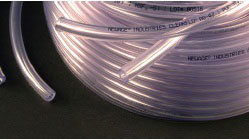Antibacterial plastics: Plastics as agents of protection
Also, download this story from the electronic issue here
Antibacterial plastics are taking the infection defence to the “surface” level, says Angelica Buan in this article.
Modern medicine continues to combat emerging diseases and modify available management modalities for identified diseases, because new strains are developing and showing resistance against known therapies.
In the recent years, antimicrobial resistance (AMR) has persisted even within healthcare settings and known potent antibiotics are no longer effective to neither treat nor prevent infections.
The World Health Organisation (WHO) has addressed the increasing incidence of AMRs globally. Together with partner sectors, WHO has undertaken a surveillance report to appraise the extent of AMR as well as track new trends and threats, and the efficacy of healthcare interventions.
While this situation is reminiscent of the pre-antibiotic era, or when infections that are now treatable used to cause mortality, experts would still advice that prevention is better than cure.
First line of defence
Integral to modern medicine is advancement in technologies to speed up access and delivery of care.
Amongst the new preventive innovations are the antimicrobial or antibacterial plastics, which find use for a wide variety of applications, including medical devices, food packaging, textile, construction parts, automotive, sports equipment and more.
Now that antimicrobial resistance is on the rise, demand for antimicrobial plastics has shot up. MarketsandMarkets (M&M) in its report estimates the market to reach US$3.6 billion by 2020.
The Asia-Pacific market, led by China, is expected to drive this growth. On one hand, the US, which primarily is the largest global consumer for antimicrobial plastics, is being outpaced by the BRIC (Brazil, Russia, India, China) countries. As a result, key market players in this segment are shifting their production and distribution business in the APAC region as well as in South America, M&M said, adding that packaging, healthcare, and automotive applications are top market segments for antimicrobial plastics.
For healthcare and most other applications, the growing innovations are aimed at proactively inhibiting microbial growth in plastic devices and products. Moreover, the heightened awareness regarding health-related infections, also imitates regulations in North America and Europe to use products and devices of antimicrobial coatings to prevent contamination and re-infection.

Protective technologies
Regular plastics can attract microbes, which cause it to be discoloured, develop bad odour or promote degradation.
To provide the germicide property, resins are either added or coated with antimicrobial compounds during compounding or moulding.
Silver, which has been a widely used antimicrobial for centuries, reacts electrochemically with moisture on contact, and releases ions. The silver ions inhibit the growth, function and proliferation of the microbes.
American flexible plastic tubing and hose maker NewAge Industries offers its Clearflo Ag-47 antimicrobial tubing that is suitable for a variety of fluid transfer applications.
The REACH and RoHS compliant Clearflo Ag-47 is made from phthalate-free clear, flexible PVC compound and contains a silver ion additive that has been proven to safeguard against microorganisms, including E. coli, listeria, salmonella and pseudomonas. The transparent tubing handles temperatures between -40°C and 52°C.
Illinois-based colourants and additive masterbatch manufacturer Plastics Color offers antimicrobial formulations for polymers. The MicroBlok antimicrobial technologies are engineered into the resins during the compounding process. There are several types of antimicrobial additives for polymers that have been tested and proven effective in impeding the growth of microbes.
MicroBlok S contains silver ions that dispersed uniformly throughout the polymer matrix, creating a high-efficiency antimicrobial action. MicroBlok can be custom blended in a wide variety of polymers including TPU, PC, ABS, PP and PE, and can be custom formulated for moulding or extrusion applications.
Silver’s antimicrobial function is also utilised by Connecticut-based Galazin Products, which launched Slivver, a slim credit card sleeve made of conductive plastic. Measuring 3.44 in by 0.5 in, Slivver gives twofold protection: it spares the users to physically touch screens that are likely contaminated with microbes and the sleeve itself is antimicrobial.

Meanwhile, another metal, copper’s antimicrobial potential has also been explored and applied in plastics. In 2011, a study published in Letters in Applied Microbiology on PP embedded with copper metal or copper oxide nanoparticles was undertaken by researchers from Universidad de Chile, who said that copper is an outstanding material for biocide applications.
With the advancement in nanotechnology, a new generation of copper-based nanoparticles (CNP) that exhibit biocidal properties can be produced. In the study, copper metal or copper oxide nanoparticles were set into PP, producing an antimicrobial polymer composite. The team also found that “copper oxide particles were more efficient in killing E. coli than copper metal nanoparticles.”
Safer alternative for natural biocides
There is no question about the usefulness of silver, especially in the case of its antimicrobial function. However, the catch with silver is that when this metal has been broken down to nanoparticles, it can penetrate a cell wall, such as a human cell, and thus may alter the cells, according to a finding by Professor Frank Kjeldsen, and Dr Thiago Verano-Braga of the Department of Biochemistry and Molecular Biology at the University of Southern Denmark. Needless to say, these compounds may somehow pose safety risks to humans and the environment.
The Swedish chemical inspection agency echoes these findings and has ruled that silver poses a danger to human cell and embryotic development.
A European firm Parx Plastics launched in mid- 2014 what it claims is the world’s first biocompatible and non-toxic, non-leaching antibacterial plastic. The material, Sanipolymers, utilises Parx Plastics’s biomimetic technology, and does not rely on silver or nanoparticles. It is biocompatible since Sanipolymers make use of an essential trace element found in food, responsible for a healthy immune system. It attacks gram+ and gram- bacteria by rupturing their cell walls.
According to Parx Plastics, the product’s surface wards off bacteria by means of a mere physical and mechanical action. It says, “laboratory tests prove it kills up to 99% of the bacteria within 24 hours.”
The system is suited for a variety of polymers, including polyolefins, nylon, copolyester, ABS and PC, said Parx Plastics.
If biocompatibility is the key to safety, nothing else could be better than food-derived antibacterial benefits.
A recent study by the University of Georgia College of Family and Consumer Sciences (UGC), published in the Journal of Applied Polymer Science, found that bioplastics from protein sources, such as whey, soy and egg, have high antibacterial properties.
Of the three bases for bioplastic material, the most outstanding is the egg albumen. This, according to the researchers, exhibits significant antibacterial properties when blended into glycerol, a plasticiser. In fact, a complete inhibition of bacteria on the albumenspiked bioplastic is seen, the researchers said. This breakthrough finding, while it is in cue for more in-depth study, already provides basis for antibacterial options for the biomedical and packaging sectors.

Meanwhile, another innovation has sprung from researchers at Sweden’s KTH Royal Institute of Technology, led by Professor Mikael Hedenqvist. The team has produced antibacterial fibres that combine biocompatible plastics with the antimicrobial compound commonly found in seaweeds of the Rhodophyta family.
Lanosol, sourced from red algae and found to be a good alternative to particle-based antibacterial, is combined with the plastics using a process called electrospinning to produce an ultra-thin thread, or about one-hundredth of a human hair, according to Hedenqvist. He adds that the lanasol-blended thread does not clump up like fibres using silver or other antibacterial particles, which could otherwise adversely affect the thread’s mechanical properties. The material has potential application in hospital settings: from clothing and bandages to air filters.
Hedenqvist furthered that the antiseptic property of the algae has been shown to kill almost 100% of the staphylococcus aureus bacteria, the most common cause of skin and wound infections in hospital environments.
Meanwhile, a collaborative study by researchers from Israel’s Agriculture Research Organisation and the Southern Illinois University on the microbe-fighting properties of curcumin, a turmeric compound, has explored its potential for food-safe antibacterial surfaces such as countertops.
In the study, nano-vesicles consisting of fats and sugar, were filled with curcumin and were attached to a glass surface. This resulted in bacteria being eliminated by curcumin on contact.
Other natural food compounds with known antimicrobial properties, such as those found in grapes and olives, were also tested. But curcumin exhibited the highest antibacterial power in inhibiting e-coli growth.
Further tests need to be carried out for foodbased antimicrobials if these will be utilised commercially, to determine if the treated surfaces work on a long term and do not leach onto the food or are able to curb the formation of biofilms, the researchers said.
While all of this is still in the infancy stage, the platform has been set for further use of alternative additives in the medical sector for plastic equipment.
(PRA)Copyright (c) 2015 www.plasticsandrubberasia.com. All rights reserved.









































